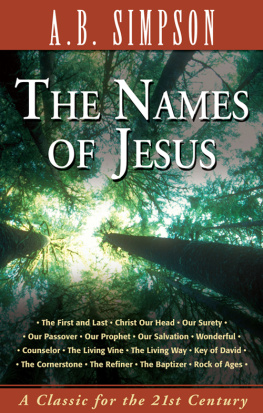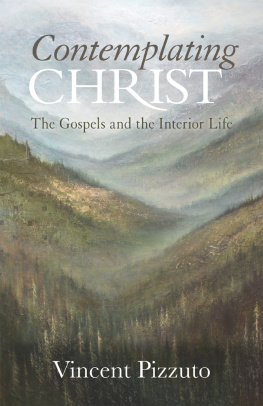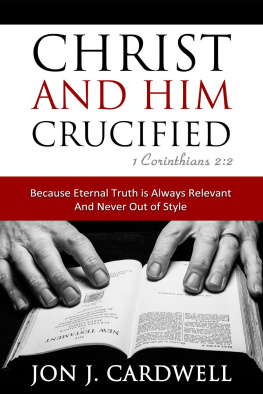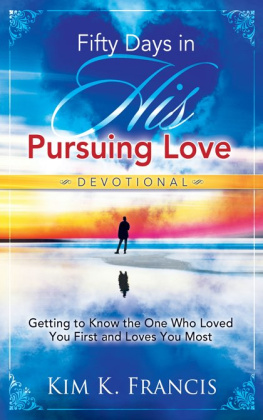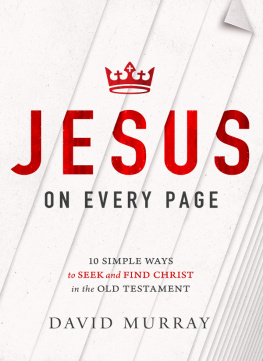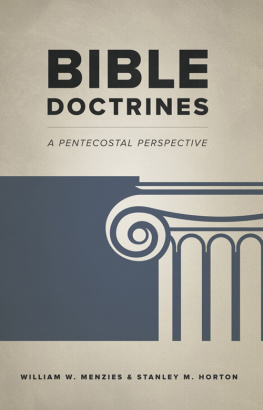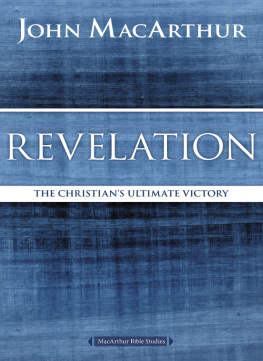OVERTURE / Eden Jersak
switching trees
FULL DISCLOSURE
a preface
RADICALUNIQUENESS
the Light, the Word, the Name & the Lamb
RADICALINCLUSION
conflicting visions of righteousness
RADICALINTIMACY
my Abba
RADICALENGAGEMENT
toddlers with crayons
RADICALENCOUNTERS
seven stories
RADICALRELEASE
the priest at Jesus feet
FINIS
in practice: a consummation
RESPONSE / Jamie & Donna Winship
in conversation: kingdom circles
APPENDIX I
five witnesses: a confirmation
APPENDIX II
important definitions:
inclusion, pluralism, syncretism
IN: Incarnation & Inclusion,
Abba & Lamb
Copyright 2019 Bradley Jersak
All rights reserved. No portion of this book may be reproduced, stored in any form except for brief quotations in reviews or articles, without prior permission from the author.
Published by St. Macrina Press
Editorial services: Felicia Murrell
The Bee Company - www.yzcounsel.com
Bible Translations
NTE: Default New Testament references are from N.T. Wright, The New Testament for Everyone [also titled The Kingdom New Testament: A Contemporary Translation ] (SPCK, 2011).
DBH: David Bentley Hart, The New Testament: A Translation (Yale, 2018).
HB: Default Old Testament references are from Robert Alter, The Hebrew Bible: A Translation with Commentary (Norton, 2019).
Emphases: All emphases throughout the book are the authors,
including Scripture texts and cited material, unless indicated.
ISBN: 978-1-0824-6173-6
Jersak, Bradley Mark, 1964
IN: Incarnation & Inclusion, Abba & Lamb / Bradley Jersak
1. Nonfiction Religion Ecumenism & Interfaith
St. Macrina Press
Abbotsford, BC | www.bradjersak.com
Incarnation & Inclusion,
Abba & Lamb
Bradley Jersak
for Peter and Anne-Marie Helms
Before I even knew you, you included me.
When others excluded me, you welcomed me.
Even when it cost you, you stood with me.
Like Jesus.
Prost!
OVERTURE / Eden Jersak switching trees
BRADANDIMET for the first time in September of 1982. We were just two of the hundreds of budding theologians at our chosen bible college. We were eighteen-years-old and enjoyed the surety of knowing who was IN and who was OUT. I shudder now at the memory of our misguided prejudgments and the broad strokes of our condemnation of others.
My eyes were opened just a little bit in those years at college, surprised by the depth of faith and understanding I discovered in my co-eds who had grown up in other Christian denominations. Somewhere along the line, I had picked up the idea that everyone outside my church affiliation was a lesser Christian. If pushed, I may have even questioned Brads Baptist upbringing as a bit shaky.
In our third year of college, we segued our friendship into dating and began to spend a lot more time together. I recall one discussion we had about divorce and remarriage, and how we thought being remarried would throw a person into a perpetual state of sin, which of course would ensure the person would be OUT on the Day of Judgment.
In those days and through the following decades, we would spend a lot of time figuring out, either quietly in our own minds or in heated discussions at the table, who was IN and who was OUT. What we hadnt realized is that we were sitting under the Tree of The Knowledge of Good and Evil, gobbling the forbidden fruit and wasting our precious time sorting and judging what we could not possibly know!
I cant say exactly when the dawning begangradual and very subtle shifts in our hearts provided new vantage points for us to discover. But slowly, we began to shift, to see God even in those who hadnt arrived, in those who couldnt even comprehend what God was offering.
Brad was a youth pastor for a decade, and we were witnesses of Gods extravagant love for kids who were coming to youth with no history or understanding of God. Many even met Christ outside the youth group, because some of our teens were praying with kids at school and God would show up, as wed say in those days. Apparently, God wasnt nearly as picky about the rules of inclusion as we were.
Then in 1998, we planted a church and again discovered that Gods arms were open much wider than we were aware. Our church was made up of people with disabilities, prodigals returning home, children, addicts in recovery or still battling their disease, the poor and the rest of usthe ones who thought we had it all together. It was chaos on a good Sunday and bedlam on the worst. But we began to see that whether our disabilities were evident or hidden, whether we were actual children or adult children, whether our addictions were manageable or out of control, and whether our bank book balanced or we couldnt even afford a bank book, Gods image was stamped on each of us!
Our steps forward were painfully slow; our progress was incremental but our hearts always desired to be faithful and teachable. But even our inclusion was still cloistered in our church, focused on those who we deemed were at least trying. Our measurement of who was IN and who was OUT had enlarged marginally. The problem was that we still clung to our measuring stick, seeking shade under the Tree of the Knowledge of Good and Evil.
Personally, I think my most significant shift towards the Tree of Life happened when I began to recall what my mother modeled for us in my childhood. I remembered that nomatter how difficult we were at the dinner table, we were never made to leave. We were expected to stay put in all our misery. We were never banished for our bad behavior or excluded because of something we had done.
My mom exemplified this further every time she invited the black sheep of the family to our family Christmas events. That was confusing to me as a child because in my mind and in our culture, they were most certainly Out, yet that never deterred my mom from inviting them to our table.
Looking back, those are some of the clearest examples Ive seen of Gods heart toward his family. So often, we have chosen to believe that only the kids who behave, who follow the narrow path and say the magic prayer are IN the family. But the prodigal son was never less than a son. He just missed out on the benefits of the sonship that had always been his.
Now, thirty-three years into our marriage, we are feeling the freedom of not having to waste our time and energy sorting people into our imaginary IN and OUT camps. We can lay under the Tree of Life and enjoy the fruit of life that fills us with the hope that God is far more loving and inclusive than our old measuring sticks could fathom.
Brad has demonstrated his willingness to stick his neck out on this account. I have seen him validate those who have been shut out by the church and discarded by Christians. He has repeatedly and with lovingkindness invited them to the table and valued them as God values them. When he writes, he recognizes that if he errs, he must err on the side of hope. This is not a theoretical bookits a book of our experiences and discoveries of how wide and deep, long and high Gods love is for each of us, for all of us.


